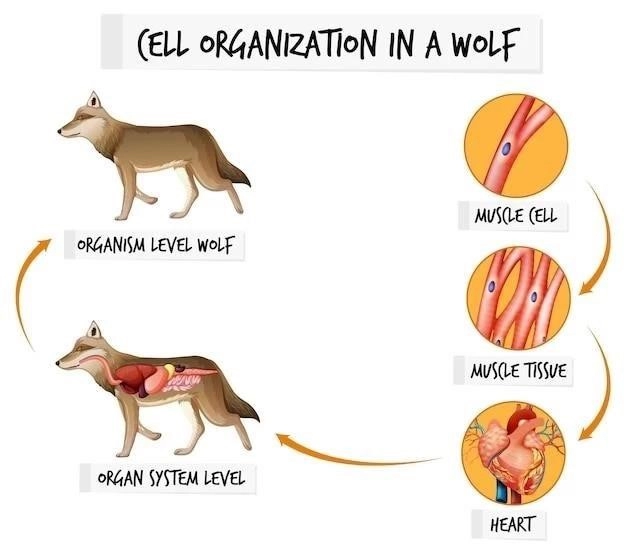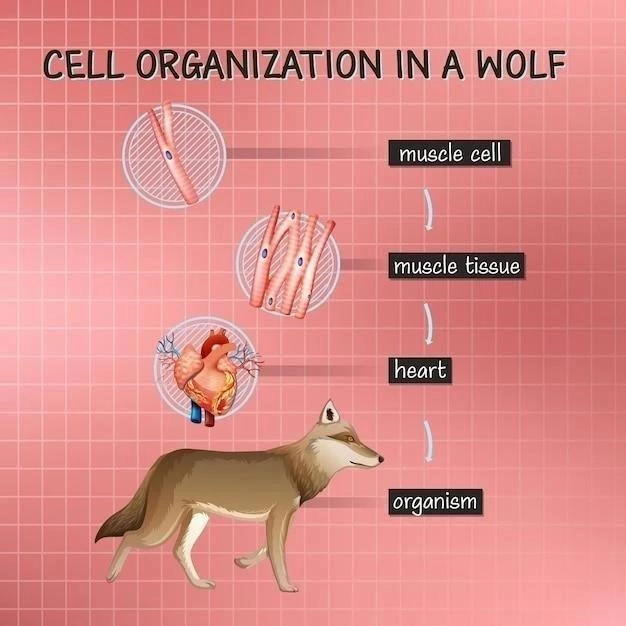As a nature enthusiast, Ive always been fascinated by the sheer diversity of life on Earth, especially the remarkable ways animals adapt to their environments․ From the icy Arctic to scorching deserts, the physiology of animal adaptations is a testament to the power of natural selection․ Ive had the opportunity to observe some of these adaptations firsthand, and Im continually amazed by natures ingenuity․

The Case of the Camel
Take the camel, for instance․ I once trekked through the Sahara Desert, and witnessing camels thrive in that harsh environment left an indelible mark on me․ Their adaptations are nothing short of incredible․
Their humps, contrary to popular belief, dont store water – they store fat․ This fat serves as a source of energy and helps regulate their body temperature in the extreme desert heat․ I learned that this fat breakdown actually releases water, contributing to their hydration․
Furthermore, camels have thick eyelashes and nostrils that can close, shielding them from blowing sand․ Their wide feet act as natural snowshoes, preventing them from sinking into the sand․
The Giraffes Grace
On a safari in Kenya, I was captivated by the elegance of giraffes․ Their long necks, a classic example of adaptation, allow them to reach high into the trees for food, giving them a competitive advantage in the savanna ecosystem․
However, their long necks also pose a challenge⁚ drinking water․ I observed how they awkwardly splay their legs to reach the waterhole, making them vulnerable to predators․ Its a reminder that adaptations are often a trade-off, offering advantages while presenting new challenges․
Beyond the Obvious⁚ Cryptic Coloration
While some adaptations are readily apparent, others are more subtle․ During a hike in the Amazon rainforest, I struggled to spot even the most common insects․ Their camouflage, a form of cryptic coloration, rendered them nearly invisible against the backdrop of leaves and bark․
This adaptation, I realized, is crucial for both predator and prey․ It allows predators to ambush their prey and prey to avoid detection․

The Importance of Understanding Adaptations
Studying animal adaptations is not just about marveling at natures wonders; its about understanding the delicate balance of ecosystems․ These adaptations highlight the interconnectedness of life and the importance of preserving biodiversity․
As human activities continue to impact the planet, its crucial that we appreciate and protect these incredible adaptations․ By understanding how animals have adapted to their environments, we gain a deeper understanding of the natural world and our place within it․
Speaking of human impact, I recently visited a friend who works at a wildlife rehabilitation center․ She shared a heartbreaking story about a sea turtle that had ingested plastic, mistaking it for jellyfish․ It was a stark reminder that even the most remarkable adaptations cant always protect animals from the consequences of our actions․
That experience inspired me to learn more about the physiological adaptations of animals facing pollution․ I volunteered at a lab studying the effects of oil spills on seabirds․ We examined feather samples under microscopes, and I was shocked to see how oil damaged their intricate structure․
Seabirds have incredibly dense feathers that help them stay warm and afloat․ Seeing the destructive impact of oil firsthand made me realize the fragility of these adaptations․ It was a powerful lesson in the importance of responsible environmental stewardship․
My journey through the world of animal adaptations has been filled with awe, wonder, and, at times, deep concern․ Its shown me the resilience of life, but also its vulnerability․ I believe that by understanding and appreciating these adaptations, we can all play a part in ensuring a healthier planet for all creatures, great and small․
My fascination with animal adaptations wasnt confined to far-off jungles and savannas․ Even in my own backyard, I found myself drawn to the subtle wonders of the natural world․ One humid summer evening, I noticed a firefly flickering in the twilight․ It was a familiar sight, yet I realized I knew very little about how these creatures produced their mesmerizing light․
I decided to do some research and learned about bioluminescence, the chemical reaction that allows fireflies to glow․ It seemed like something out of science fiction, but there it was, unfolding right before my eyes! I spent weeks observing the fireflies, noting the patterns of their flashes and how they used their light to attract mates․ It was like having a front-row seat to a silent symphony of light․
My curiosity led me to contact a local entomologist, Dr; Anya Patel, who specialized in fireflies․ She invited me to join her team on a field study, and I jumped at the chance․ We spent several nights in a nearby forest, carefully capturing fireflies and measuring their light output using specialized equipment․ Dr․ Patel explained how different species had unique flash patterns, like biological Morse code, to communicate with each other․
One night, Dr․ Patel showed me something incredible․ She pointed to a cluster of fireflies that seemed to be flashing in unison․ “Thats called synchronous flashing,” she whispered, “and its still a bit of a mystery to scientists․” We watched in awe as hundreds of fireflies lit up the night in perfect harmony․ It was a humbling reminder of how much we still dont know about the natural world and the incredible adaptations that continue to surprise and inspire us․
Dr․ Patels enthusiasm was contagious, and I found myself getting more involved in her research․ I learned to identify different firefly species by their flash patterns and even helped set up light traps to study their population dynamics․ One evening, while collecting data in the field, I noticed something unusual․ A firefly, much smaller than the others, was emitting a faint, bluish light․ I pointed it out to Dr․ Patel, and she gasped․
“Ive never seen one like that before!” she exclaimed, her eyes widening with excitement․ We carefully captured the firefly and brought it back to the lab․ After examining it under a microscope, Dr․ Patel determined that it was a previously undocumented species! We were both ecstatic․ We spent the next few weeks observing the fireflys behavior and collecting DNA samples․ It was an incredible honor to be part of such a significant discovery․
That experience solidified my passion for studying animal adaptations․ It showed me that even in the most familiar of places, there are still mysteries waiting to be uncovered․ All it takes is a curious mind and a willingness to look a little closer․
Since then, Ive continued to explore the natural world, seeking out new examples of adaptation and marveling at the ingenuity of life․ Ive traveled to the Galapagos Islands, where I witnessed firsthand the incredible diversity of finch beaks that inspired Darwins theory of evolution․ Ive snorkeled in coral reefs, amazed by the vibrant colors and intricate camouflage of the fish․ And Ive hiked through old-growth forests, humbled by the towering trees that have adapted to thrive for centuries․
Each experience has deepened my appreciation for the interconnectedness of life and the importance of protecting our planets biodiversity․ Ive learned that the study of animal adaptations is not just about understanding the past; its about safeguarding the future․ By sharing my passion for the natural world and inspiring others to appreciate its wonders, I hope to contribute to a more sustainable and harmonious relationship between humans and nature․
My fascination with bioluminescence didnt end with fireflies․ I became captivated by the idea of creatures illuminating the deep sea, a world shrouded in perpetual darkness․ I devoured documentaries about anglerfish dangling glowing lures and vampire squid ejecting bioluminescent ink․
I longed to witness these wonders firsthand, but deep-sea exploration seemed like an impossible dream for an amateur naturalist like myself․ That is, until I stumbled upon a research expedition being organized by a marine biology institute in California․ They were looking for volunteers to assist with data collection and sample processing aboard their research vessel․ I didnt hesitate for a second before submitting my application․
To my delight, I was accepted! A few months later, I found myself aboard the R/V Nautilus, a state-of-the-art research vessel equipped with remotely operated vehicles (ROVs) capable of diving thousands of meters below the surface․ The expedition was focused on studying the biodiversity of a newly discovered hydrothermal vent system․
I spent hours in the control room, my eyes glued to the monitors as the ROVs beamed back live footage from the abyss․ It was like entering an alien world․ Towering chimneys of rock spewed superheated water, and strange, gelatinous creatures drifted past the camera lens․ And then, I saw it⁚ a cluster of giant tube worms, their feathery plumes glowing an eerie, ethereal blue․
The scientists explained that the tube worms had a symbiotic relationship with chemosynthetic bacteria that lived inside them․ These bacteria, unlike plants, didnt need sunlight to produce energy․ Instead, they harnessed the chemical energy from the hydrothermal vents, a process that released light as a byproduct․ It was like nothing I had ever seen before․
That expedition was a turning point for me․ It showed me the power of science to illuminate even the darkest corners of our planet and the importance of exploration and discovery in a world facing unprecedented challenges․ I returned home with a renewed sense of purpose and a deep commitment to sharing my passion for the natural world with others․











Your article is a great reminder of the importance of conservation. We need to protect these amazing creatures and their habitats.
Your personal experiences observing these adaptations make this article so engaging. It
I never knew that a camel
Your article is both informative and engaging. I learned a lot about animal adaptations while enjoying your personal anecdotes.
The way you described the camel
Your article is a great resource for anyone interested in learning more about the natural world. I
Your article is a great reminder of the incredible diversity of life on our planet. It makes me appreciate the natural world even more.
I
The way you connected the camel
I love how you used your personal experiences to illustrate the concept of animal adaptations. It makes the science so much more relatable and interesting.
As a fellow nature enthusiast, I share your fascination with animal adaptations! Your description of the camel
Your description of the giraffe
I appreciate your passion for nature and your ability to share that passion with others through your writing. Thank you for this insightful article.
Your encounter with giraffes in Kenya sounds incredible! I love how you highlighted both the advantages and challenges of their long necks. It
The way you described the cryptic coloration of insects in the Amazon rainforest really brought it to life. It makes you realize how much we miss when we
Your article is a great reminder that we still have so much to learn from the natural world. Thank you for sharing your insights!
Your writing style is so engaging. I felt like I was right there with you, experiencing the wonders of the natural world.
Your article is a great example of how science writing can be both informative and entertaining. I couldn
Your article is a great example of how science can be made accessible and interesting for everyone. I loved reading about your adventures!
Your writing style is so vivid and descriptive. I felt like I was right there with you, trekking through the desert and observing giraffes in their natural habitat.